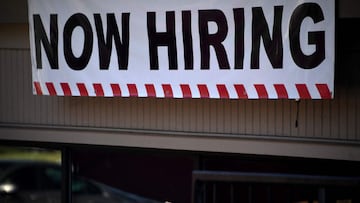UNEMPLOYMENT BENEFITS
What has Biden said about some states extending unemployment benefits after September?
Federal pandemic unemployment benefits are scheduled to end on 6 September, but with delta raging Biden has urged some states to continue the payments.

In July, the Bureau of Labor Statistics reported the total number of unemployed workers at 8.7 million, representing an unemployment rate of about 5.4 percent. This figure is the lowest seen during the pandemic.
The news was also positive for the number of people experiencing long-term unemployment. After months of either no change or increases, the BLS recorded that the number of “long-term unemployed (those jobless for 27 weeks or more) decreased by 560,000 in July to 3.4 million.” The number of long-term unemployed “accounted for 39.3 percent of the total unemployed in July.”
Delta variant leads to a surge in cases.
While this news is promising, these decreases do not account for how the delta variant has ripped through the country in August.
In May and June, twenty-six states opted to end federal pandemic unemployment benefits before their 6 September deadline. Now, the majority of these states are experiencing a surge in covid-19 cases.
According to data from the CDC, the average increase in cases from 16-18 July compared to 16-18 August in states that kept federal benefits in place is 486 percent; for those states that ended benefits, it is almost double, 827 percent.
In addition to ending unemployment benefits, these states have been less likely to promote vaccination, more likely to implement bans on mask mandates, and remove covid-19 restrictions.
Some states consider extending benefits.
Late this week, officials from the Biden administration urged states experiencing a surge in covid-19 cases to consider extending unemployment benefits. However, there is one major catch: the extensions would not include the $300 federal topper sent in addition to state benefits which forms part of the Pandemic Emergency Unemployment Compensation program.
Pandemic Emergency Unemployment Compensation allowed those eligible to receive unemployment compensation, additional coverage as many states have a cap on the number of weeks claims can be made. This program also provides a $300 topper sent by the federal government in addition to state benefits.
On Thursday, 19 August, Treasury Secretary Janet Yellen sent a letter to Labor Secretary Martin J. Walsh, saying that “The temporary $300 boost in benefits will expire on September 6th, as planned.”
Sec. Yellen continued arguing that the Presidnet had always intended for the benefit to be temporary and that she is in agreement that “it is appropriate for that benefit boost to expire.”
What does the administration mean by extending benefits?
Before the pandemic began, many states had established limits on how many weeks unemployment claims could be made. On the low end of the scale, unemployed workers could receive benefits for ten weeks, and on the upper end, the limit was around twenty-five.
As many unemployed workers could not return to work within these set periods, the federal government offered support to states by paying out an additional weeks worth of benefits.
The letter outlines how states experiencing surges in covid-19 cases can use the more than $350 billion allocated to state and local governments under the American Rescue Plan to “ cover the cost of providing assistance to unemployed workers beyond September 6th,” if needed.






